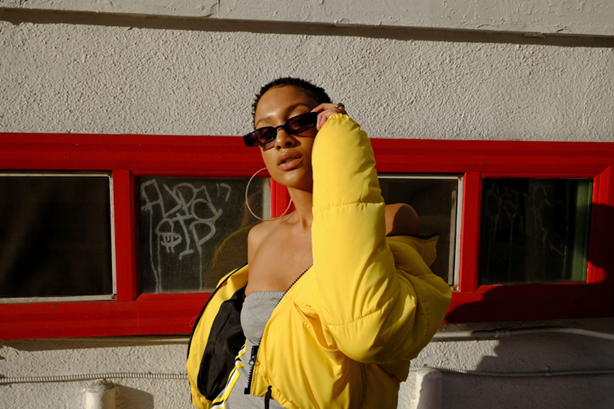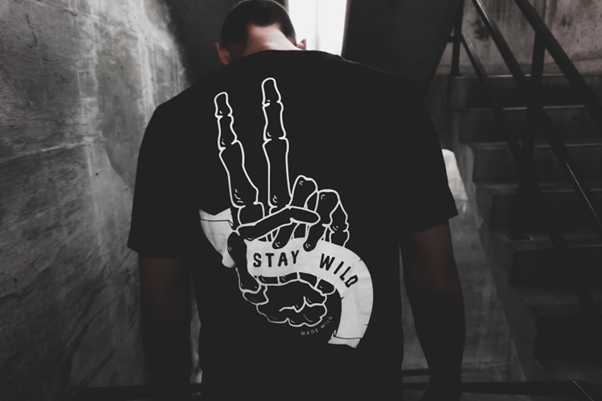How finding your personal style and appreciating your clothes can help fashion industry towards circular economy


Currently the fashion industry is filled with lots of different fast fashion and even ultrafast fashion brands. The amount of clothing produced has doubled over 15 years, while the usage of clothing has declined almost 40% (Ellen McArthur Foundation, 2024). We consume clothing in an unsustainable way. Clothing is mostly seen as something you wear once or twice and then discard it as waste. Also the quality of clothing is not what it used to be. Clothes are currently made for short time usage and new trendy pieces are offered to consumers weekly or even daily. Majority of discarded clothes are thrown to landfills or burned. Like all business models, the fast fashion business model is based on demand, referring to the principles of supply and demand. This is a very exaggerated example, but if we all collectively decided to completely stop buying fast fashion, all fast fashion brands would go extinct. So we as consumers hold a lot of power regarding where the fashion industry is heading. By rethinking our consuming habits when it comes to clothing and textiles we could help nudge fashion industry into a more sustainable way of producing garments and ultimately to circular economy.
Circular economy in fashion
The currently dominating economy is linear, meaning taking new virgin-resources, making it into a product and after using the product, disposing it as waste. Circular economy is an economy where the resources are kept in use for as long as possible as opposed to using only virgin-resources. Circularity can be for example reselling used products to a new owner, replacing virgin-materials with recycled materials or repairing and keeping products in shape to keep them in use as long as possible. In the field of fashion there are already many adaptations of circular economy in use. Second hand shops, rental services and recycled materials are a few examples of those adaptations. Selling and buying second hand is possibly the most known way for a consumer to make more sustainable choices when it comes to clothing. In Finland there has been a wave of new second hand clothing stores coming to market. Even though buying second hand is currently very trendy, when put to numbers, second hand clothing sales take only 1% of the whole entirety of clothing sales (Kallunki E. 2023). In that perspective it’s still not a lot.

Changing our attitude towards clothes
For circular economy to really work in the field of fashion, we as consumers need a change of perspective. If we think back for example to the 1920s, clothing was not something you would wear twice and then throw into garbage. At least for the majority of people. Firstly, clothes would be purchased through a tailor, a retailer or a second hand shop, depending on their available resources. Making their own clothes also wasn’t unusual. Then secondly, clothes would be mended and taken care of properly to make the most out of its lifecycle. When the piece of clothing was at the end of its life, the fabric would be repurposed to something else, maybe a washcloth. Clothing was seen as something you need in order to keep yourself warm, not as something disposable.
There’s so much that goes into designing and making clothes. By recognizing all the work, creativity and resources that it takes to make a piece of garment, we could start to appreciate our clothes again. We could see them as something more than just disposable items that come and go with the trends. By recognizing the value we would be more likely to take better care of our garments and extend their lifespan while reducing the need for constant replacements. Someone who appreciates and takes care of their clothes is more likely to be more educated on what makes a piece of garment durable and long lasting. One good way to appreciate clothing is to find your own individual style and get excited about it.

The power of knowing your style
When you don’t have an idea of what suits your body shape or what fabrics or colors you really like, deciding what to wear can be very difficult. This might push someone to just buy what’s conveniently available, and most of the time that would be fast fashion. It takes patience and effort to get to know what kind of clothes you like and what fits you best. The clothes that are offered at fast fashion stores are usually very limited in regards to what kind of bodies they flatter and fit well. So finding the pieces and shapes that are fitting to your particular body is quite time consuming, but worth the investment. When someone knows their style, they are familiar with the types of clothes that flatters them and makes them feel good while wearing them. They know which clothes represent their personalities best. They are less likely to make failed purchases that would end up somewhere else than continual use. Hence it would reduce the amount of clothing ending up in landfills. They are also more prone to think “quality over quantity” and therefore prefer quality clothing over fast fashion. When a consumer knows their style they are more confident when it comes to shopping for clothes and less likely to buy something that is just convenient or cheap.
In conclusion
Appreciating clothes and knowing your style reduces the need for fast paced trends and bad quality items. They also promote the quality over quantity mentality. By recognizing the value of clothing and finding the joy of dressing up, we as consumers can help the fashion industry change to a circular economy and into a more sustainable field of business.
Milla Lager
Resources:
Ellen McArthur Foundation, 2024 (Referenced on 16.3.2024)
Sitra and Deloitte 2024 (Referenced on 16.3.2024)
Kallunki Elisa, Yle: Käytettyjen vaatteiden kauppoja avautuu kauppakeskuksissa ja jopa lentoasemalla, 2023 (Referenced on 16.3.2024)
These materials were created in the Baltic2Hand project which is an Interreg Central Baltic Programme 2021–2027 project that is co-funded by the European Union. Read more about the Baltic2Hand project.
